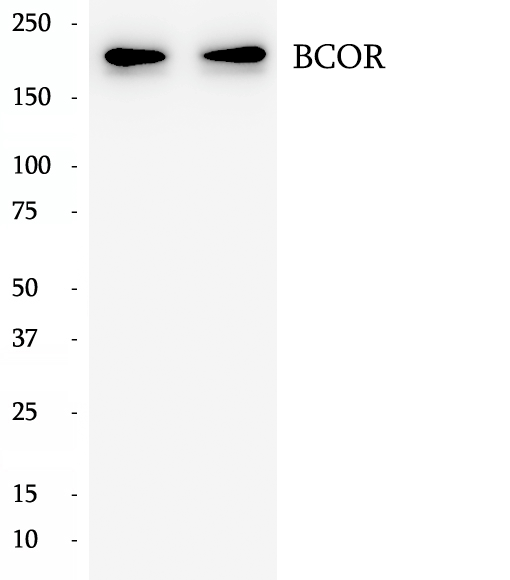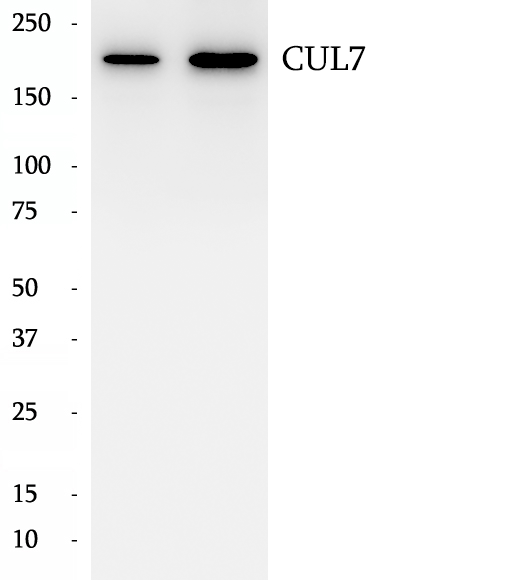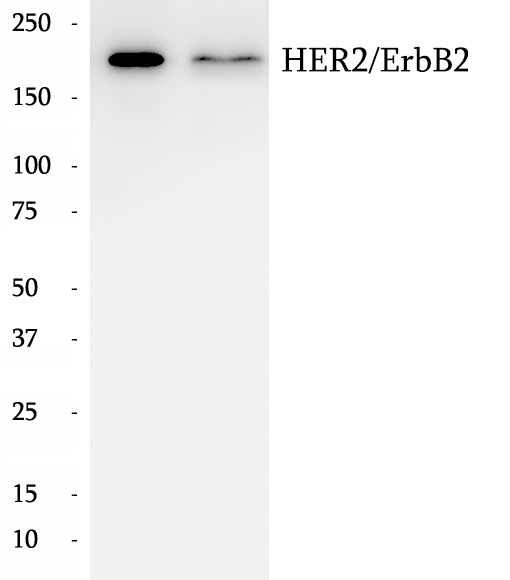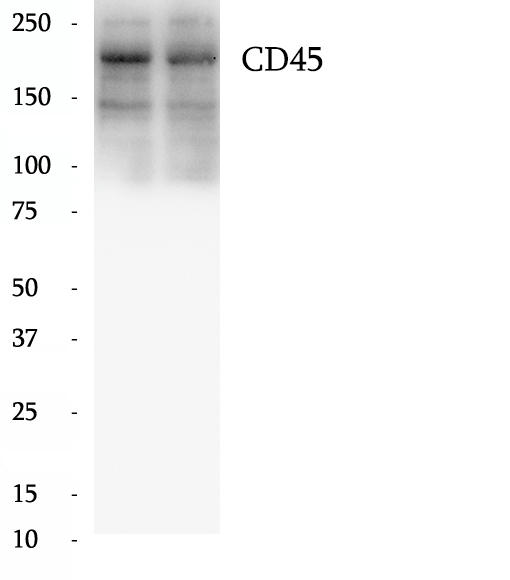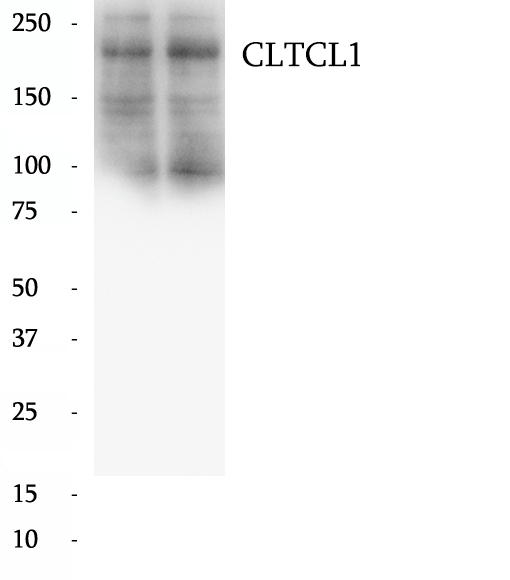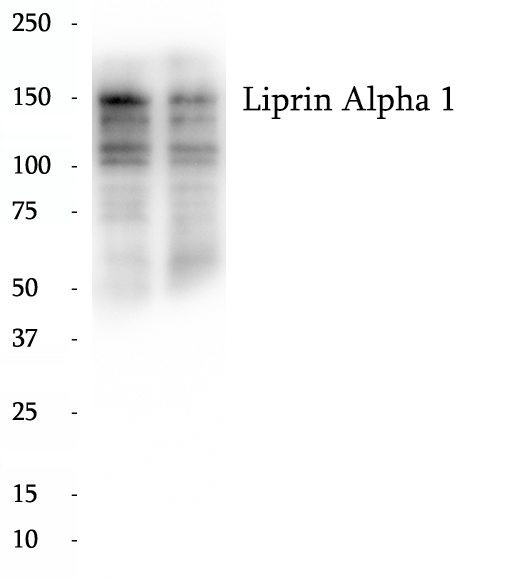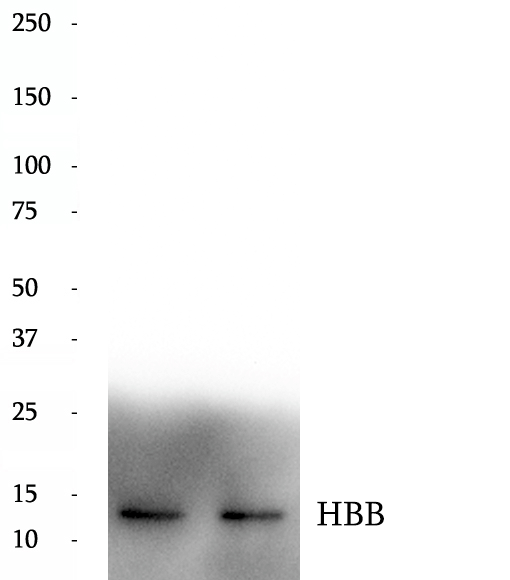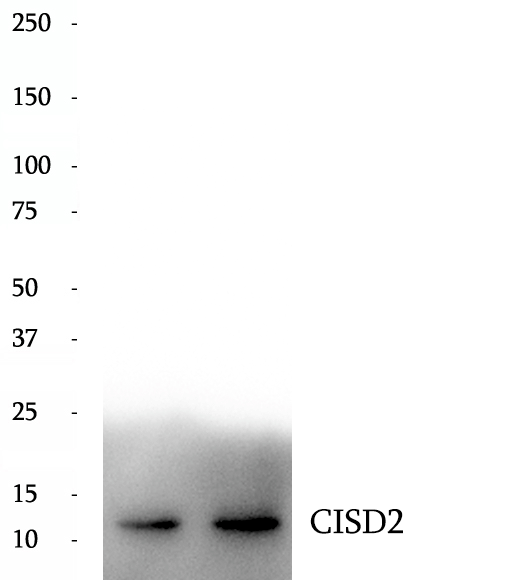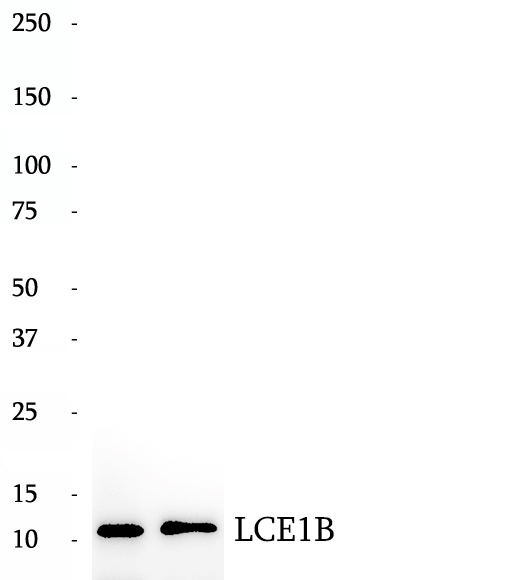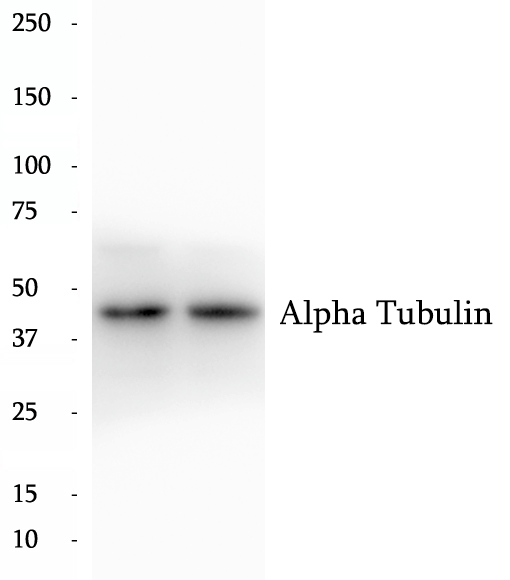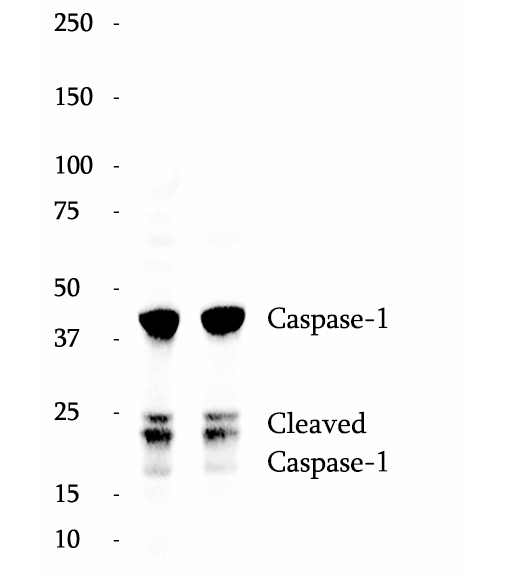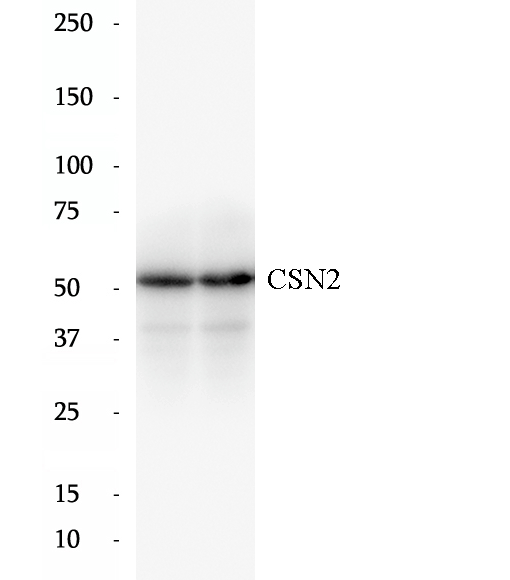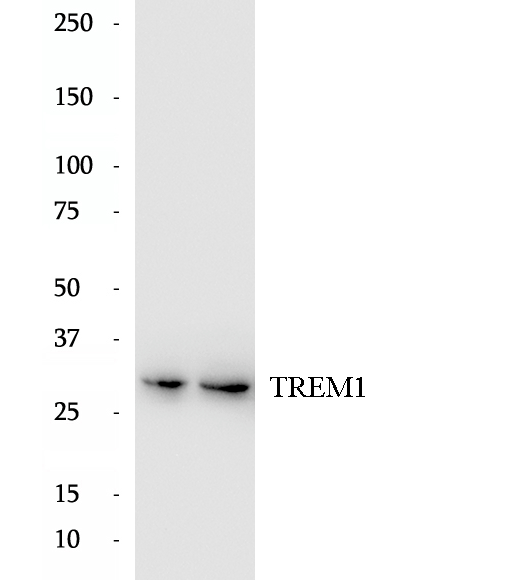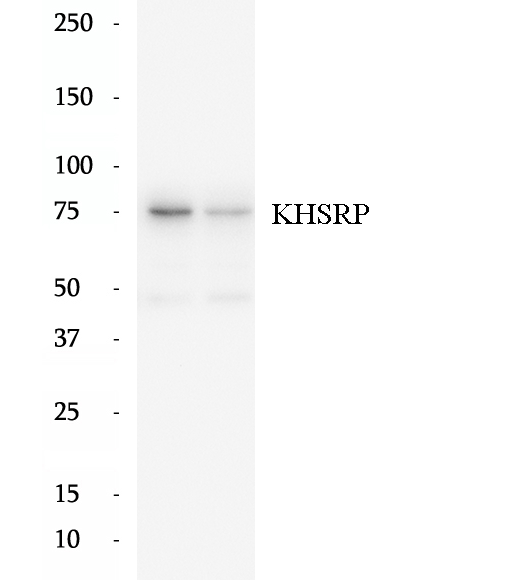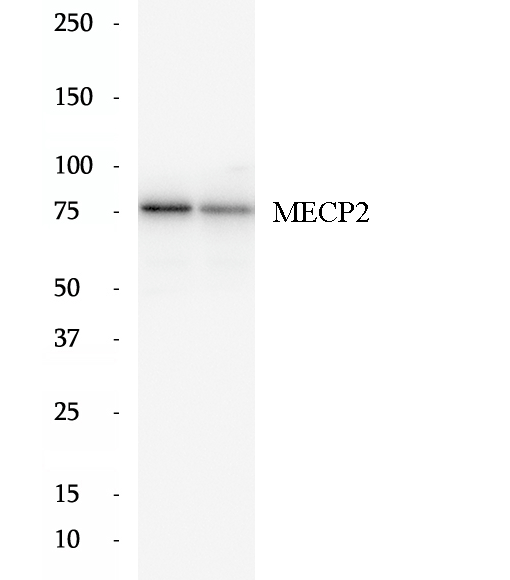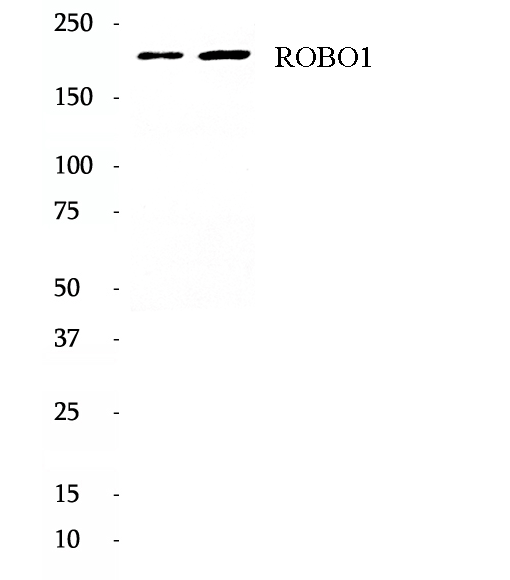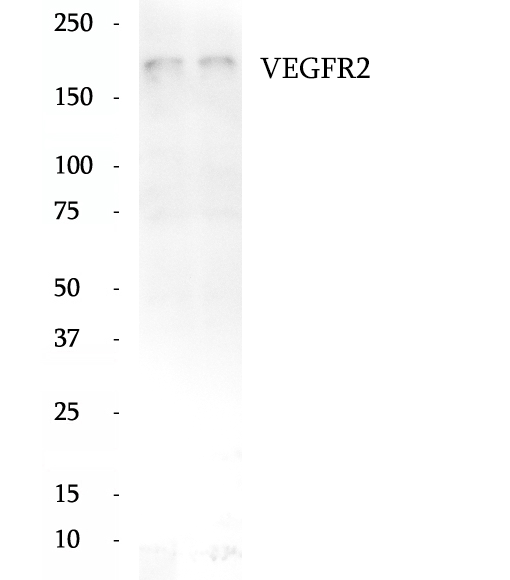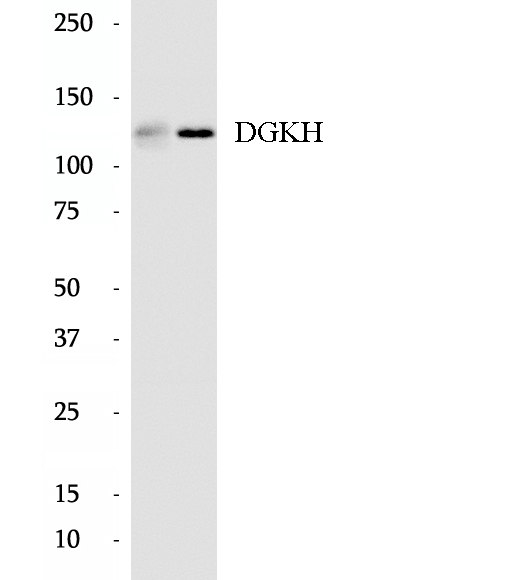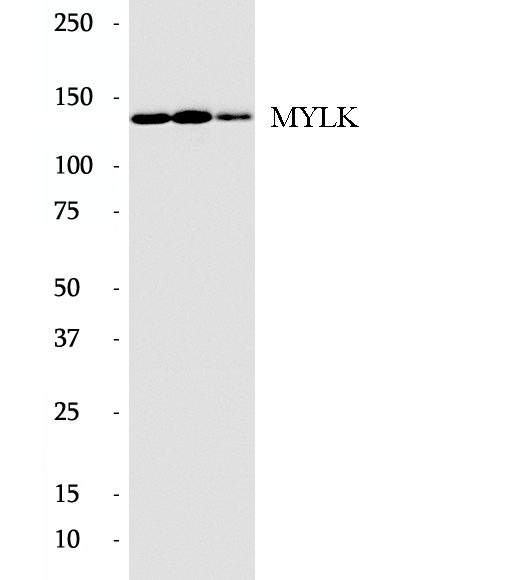|
BP62614
|
Anti-LIFR antibody
|
|
|
|
|
LIFR, also known as CD118, is a subunit of a receptor for leukemia inhibitory factor (LIF). LIF is a pleiotropic cytokine of the interleukin-6 family which affects the differentiation, survival, and proliferation of a wide variety of cells in the adult and the embryo. LIFR is the low-affinity binding chain that, together with the high-affinity converter subunit gp130, forms a high-affinity receptor complex that mediates the action of LIF. The high-affinity complex also binds a related cytokine, oncostatin M. LIFR has also been identified as a breast cancer metastasis suppressor that functions through the HIPPO-YAP pathway.
|
|
BP60460
|
Anti-BCOR antibody
|
|
|
|
|
BCOR, a corepressor of BCL6, binds to transcriptional factors and specifically inhibits gene expression. BCOR plays a key role in the early embryonic development, mesenchymal stem cell function and hematopiesis. BCOR can associate with HDACs, the polycomb group protein, polycomb group Ring finger protein1/nervous system polycomb1 (PCGF1/NSPC1), histone demethylase, F-box- and leucine-rich repeat protein10 (FBXL10). Via repression of TFAP2A acts as a negative regulator of osteo-dentiogenic capacity in adult stem
|
|
BP61162
|
Anti-CUL7 antibody
|
|
|
|
|
The cullin family proteins are scaffold proteins for the Ring finger type E3 ligases, participating in the proteolysis through the ubiquitin-proteasome pathway. Humans express seven cullin proeins: CUL1-3, CUL4A, CUL4B, CUL5, and CUL7. Each cullin protein can form an E3 ligase similar to the prototype Ring-type E3 ligase Skp1-CUL1-F-box complex. The Cullin-RING-finger type E3 ligases are important regulators in early embryonic development, as highlighted by genetic studies demonstrating that knock-out of CUL1, CUL3, or CUL4A in mice results in early embryonic lethality. CUL7 was originally discovered as 185-kDa protein associated with the large T antigen of simian virus 40 (SV40). CUL7-deficient mice exhibit neonatal lethality with reduced size and vascular defects. CUL7 presumably plays a role in the DNA damage response by limiting p53 activity. CUL7 mutations have also been identified in 3-Msyndrome and the Yakuts short stature syndrome, both of which are characterized by pre- and post-natal growth retardation but with relatively normal mental and endocrine functions, suggesting that CUL7 may also be crucial for human placental development.
|
|
BP62128
|
Anti-HER2/ErbB2 antibody
|
|
|
|
|
HER2, also known as ErbB2 and Neu, is a 185-kDa transmembrane glycoprotein that is a member of the epidermal growth factor (EGF) receptor family of receptor tyrosine kinases. It has no ligand binding domain of its own and therefore cannot bind growth factors. However, it does bind tightly to other ligand-bound EGF receptor family members to form a heterodimer, stabilizing ligand binding and enhancing kinase-mediated activation of downstream signalling pathways, such as those involving mitogen-activated protein kinase and phosphatidylinositol-3 kinase. Amplification and/or overexpression of HER2 have been reported in numerous cancers, including breast and ovarian tumors. HER2 is a therapeutic target for the treatment of breast cancer and other carcinomas. This antibody raised against a synthesized peptide corresponding to 1237-1255aa of human HER2 recognizes the 185-kDa full-length glycosylated form and other lower molecular-mass forms of HER2, including the truncated form.
|
|
BP60794
|
Anti-CD45 antibody
|
|
|
|
|
CD45 is used as a marker of all hematopoietic cells (blood cells), except for mature erythrocytes (red blood cells) and platelets. CD45 is a transmembrane protein tyrosine phosphatase located on most haematopoietic cells. CD45 immunoreactivity is recognised to be highly specific for non–Hodgkin’s lymphomas. CD45‐expressing non‐haemopoietic tumours are very rare.
|
|
BP60989
|
Anti-CLTCL1 antibody
|
|
|
|
|
CLTCL1, also named as CLH22, CLTCL and CLTD, belongs to the clathrin heavy chain family. Clathrin is the major protein of the polyhedral coat of coated pits and vesicles. Two different adapter protein complexes link the clathrin lattice either to the plasma membrane or to the trans-Golgi network. The antibody is specific to CLTCL1. It has no cross reaction to CLTC.
|
|
BP62632
|
Anti-Liprin Alpha 1 antibody
|
|
|
|
|
Liprin alpha 1, encoded by the PPFIA1 gene, is a member of the LAR protein-tyrosine phosphatase-interacting protein (liprin) family. Liprins interact with members of LAR family of transmembrane protein tyrosine phosphatases, which are known to be important for axon guidance and mammary gland development. Liprin alpha 1 may regulate the disassembly of focal adhesions and thus help orchestrate cell-matrix interactions. Alternatively spliced transcript variants encoding distinct isoforms have been described.
|
|
BP62089
|
Anti-HBB antibody
|
|
|
|
|
The hemoglobin molecule is a tetramer consisting of two alpha- and two beta-globin-like chains. HBB gene encodes hemoglobin beta chain. The hemoglobin chains, each with its own heme moiety, cooperate in binding and release of oxygen. Hemoglobin monomers have been found in blood and other tissues including macrophages, alveolar epithelial cells and brain. Defects in HBB have been linked to diseases including Sickle cell anemia, Beta-thalassemia, and Heinz body anemias. This antibody, raised against the full-length human HBB, recognizes the 13-16 kDa HBB in western blot analyses of human heart and placenta.
|
|
BP60948
|
Anti-CISD2 antibody
|
|
|
|
|
CISD2 gene encodes a 15 kDa CDGSH iron-sulfur domain-containing protein 2, which is also named Miner1 or NAF-1, this protein was reported on endoplasmic reticulum membrane or mitochondrion outer membrane. Defects in CISD2 are the cause of Wolfram syndrome type 2 (WFS2), a rare disorder characterized by juvenile-onset insulin-dependent diabetes mellitus with optic atrophy. CISD2 regulates autophagy program by interacting BCL2, contributing to antagonize BECN1-mediated cellular autophagy at the endoplasmic reticulum.
|
|
BP62589
|
Anti-LCE1B antibody
|
|
|
|
|
Human LCE1B (Late cornified envelope protein 1B), also named late envelope protein 2 (LEP2), is located at human Chromosome1q21 which contains multiple LCE clusters. LCE1B gene is predicated to encode a 118-aa protein, and is currently evidenced at transcript level. Its expression was skin-specific and was readily detected in adult trunk skin, adult arm skin, fetal skin, penal skin, vulva, esophagus and tongue light, however, LCE groups have distinct functions.
|
|
BP60168
|
Anti-Alpha Tubulin antibody
|
|
|
|
|
Tubulin in molecular biology can refer either to the tubulin protein superfamily of globular proteins, or one of the member proteins of that superfamily. α- and β-tubulins polymerize into microtubules, a major component of the eukaryotic cytoskeleton. Microtubules function in many essential cellular processes, including mitosis. Tubulin-binding drugs kill cancerous cells by inhibiting microtubule dynamics, which are required for DNA segregation and therefore cell division.
|
|
BP60668
|
Anti-Caspase 1 antibody
|
|
|
|
|
CASP1 (caspase-1) is also named as IL1BC, IL1BCE and belongs to the peptidase C14A family. It is a cysteine protease that regulates inflammatory processes through its capacity to process and activate the interleukin-1-beta (IL1B), IL18, and IL33 precursor proteins. The active caspase-1 can increase cellular membrane permeability and intracellular calcium levels, which facilitates lysosome exocytosis and release of host antimicrobial factors and microbial products. It has 5 isoforms produced by alternative splicing. 22915-1-AP can recognize all the five isoforms of caspase 1. It also can recognize p45 procaspase and the mature fragments p10 and p20.
|
|
BP61125
|
Anti-CSN2 antibody
|
|
|
|
|
COPS2 is an essential component of the COP9 signalosome complex (CSN), a complex involved in various cellular and developmental processes. The CSN complex is an essential regulator of the ubiquitin (Ubl) conjugation pathway by mediating the deneddylation of the cullin subunits of SCF-type E3 ligase complexes, leading to decrease the Ubl ligase activity of SCF-type complexes such as SCF, CSA or DDB2. The complex is also involved in phosphorylation of p53/TP53, c-jun/JUN, IkappaBalpha/NFKBIA, ITPK1 and IRF8/ICSBP, possibly via its association with CK2 and PKD kinases. CSN-dependent phosphorylation of TP53 and JUN promotes and protects degradation by the Ubl system, respectively. (refer to UniProt) Catalog#10969-2-AP is a rabbit polyclonal antibody raised against the full-length of human COPS2. The MW of this protein is 52 kDa, and this antibody specially recognises the 52 kDa protein.
|
|
BP64992
|
Anti-TREM1 antibody
|
|
|
|
|
Triggering receptor expressed on myeloid cells 1 (TREM1, also known as CD354) is a member of the immunoglobulin superfamily, which is expressed on neutrophils and monocytes. TREM1 plays a role in the innate immune system. TREM1 amplifies neutrophil and monocyte-mediated inflammatory responses triggered by bacterial and fungal infections by stimulating release of pro-inflammatory chemokines and cytokines, as well as increased surface expression of cell activation markers.
|
|
BP62487
|
Anti-KHSRP antibody
|
|
|
|
|
KHSRP, also named as FUBP2, KSRP and p75, belongs to the KHSRP family.It binds to the dendritic targeting element and may play a role in mRNA trafficking. KHSRP is a part of a ternary complex that binds to the downstream control sequence (DCS) of the pre-mRNA. It mediates exon inclusion in transcripts that are subject to tissue-specific alternative splicing. KHSRP may interact with single-stranded DNA from the far-upstream element (FUSE). May activate gene expression. It is involved in degradation of inherently unstable mRNAs that contain AU-rich elements (AREs) in their 3'-UTR, possibly by recruiting degradation machinery to ARE-containing mRNAs.
|
|
BP62794
|
Anti-MECP2 antibody
|
|
|
|
|
METHYL-CpG-BINDING PROTEIN 2 (MECP2), is a chromatin-associated protein that can both activate and repress transcription. Mecp2 in the adult mouse is high in the brain, lung, and spleen, lower in heart and kidney. MECP2 takes part in the control of neuronal activity-dependent gene regulation, and this process may underlie the pathology of Rett syndrome, a severe developmental disorder with autistic phenotypes. As compared to wild-type monkeys, MECP2 transgenic monkeys exhibited a higher frequency of repetitive circular locomotion and increased stress responses, as measured by the threat-related anxiety and defensive test. Chromosomal protein that binds to methylated DNA. It can bind specifically to a single methyl-CpG pair. It is not influenced by sequences flanking the methyl-CpGs. Mediates transcriptional repression through interaction with histone deacetylase and the corepressor SIN3A. Two isoforms of MECP2 exist due to alternative splicing events.This antibody reacts with the MECP2 and phosphorylated MECP2 proteins. The calculated molecular weight of MECP2 is a 52 kDa, but the post-modified MECP2 protein is about 75-80 kDa.
|
|
BP64156
|
Anti-ROBO1 antibody
|
|
|
|
|
ROBO1, also named as DUTT1, belongs to the immunoglobulin superfamily and ROBO family. It is a receptor for SLIT1 and SLIT2 which are thought to act as molecular guidance cue in cellular migration, including axonal navigation at the ventral midline of the neural tube and projection of axons to different regions during neuronal development. In axon growth cones, the silencing of the attractive effect of NTN1 by SLIT2 may require the formation of a ROBO1-DCC complex. It may be required for lung development. The antibody is specific to ROBO1.
|
|
BP65232
|
Anti-VEGFR2 antibody
|
|
|
|
|
KDR, also named as VEGFR-2, FLK1 and CD309, is a receptor for VEGF or VEGFC. KDR which belongs to the protein kinase superfamily, has a tyrosine-protein kinase activity. The VEGF-kinase ligand/receptor signaling system plays a key role in vascular development and regulation of vascular permeability. In case of HIV-1 infection, the interaction with extracellular viral Tat protein seems to enhance angiogenesis in Kaposi's sarcoma lesions. KDR functions as the main mediator of VEGF-induced endothelial proliferation, survival, migration, tubular morphogenesis and sprouting. Mutations of this gene are implicated in infantile capillary hemangiomas.
|
|
BP61313
|
Anti-DGKH antibody
|
|
|
|
|
DGKH (Diacylglycerol kinase eta) is also named as DGK-eta and belongs to the eukaryotic diacylglycerol kinase family. It is a key protein in the lithium-sensitive phosphatidyl inositol pathway, and recently a link between environmental stress and schizophrenia/bipolar disorder has been revealed. DGKH has some isoforms produced by alternative splicing. Two isoforms DGKH1 and DGKH2 with the molecular weight of 128 kDa and 135 kDa shows diacylglycerol kinase activity; however, the 2 isoforms differed in several other characteristics.
|
|
BP63006
|
Anti-MYLK antibody
|
|
|
|
|
MYLK (Myosin light chain kinase) is also named as MLCK, MLCK1, MYLK1 and belongs to the protein kinase superfamily. It is a key enzyme in muscle contraction. Its activation is sufficient to enhance paracellular permeability and is required for tight junction barrier regulation in response to Na+-nutrient cotransport, inflammatory cytokines, or pathogenic bacteria is expressed in smooth muscles. It has 8 isoforms produced by alternative splicing and alternative initiation and our anti-MYLK antibody can recognize these isforms.
|

